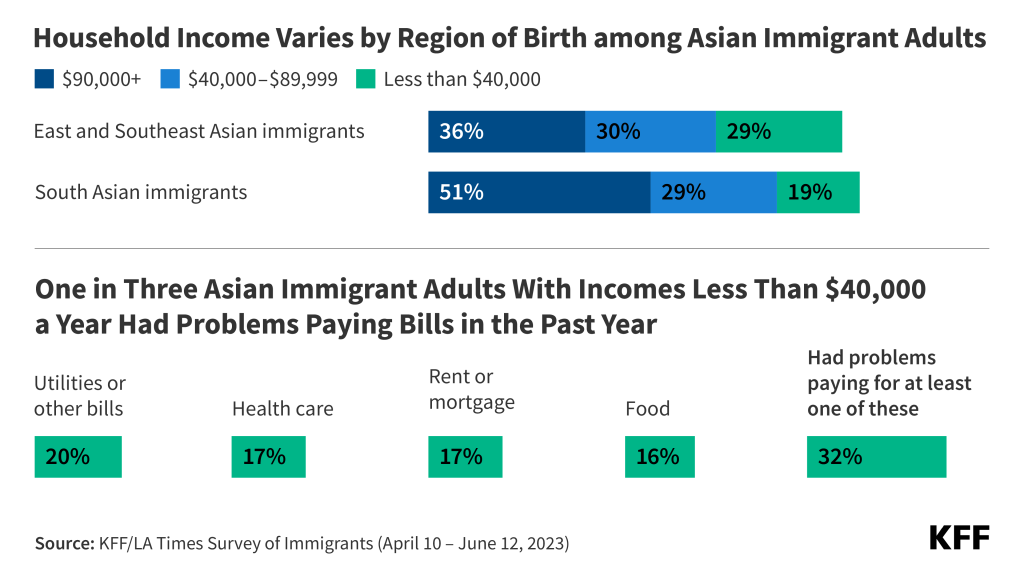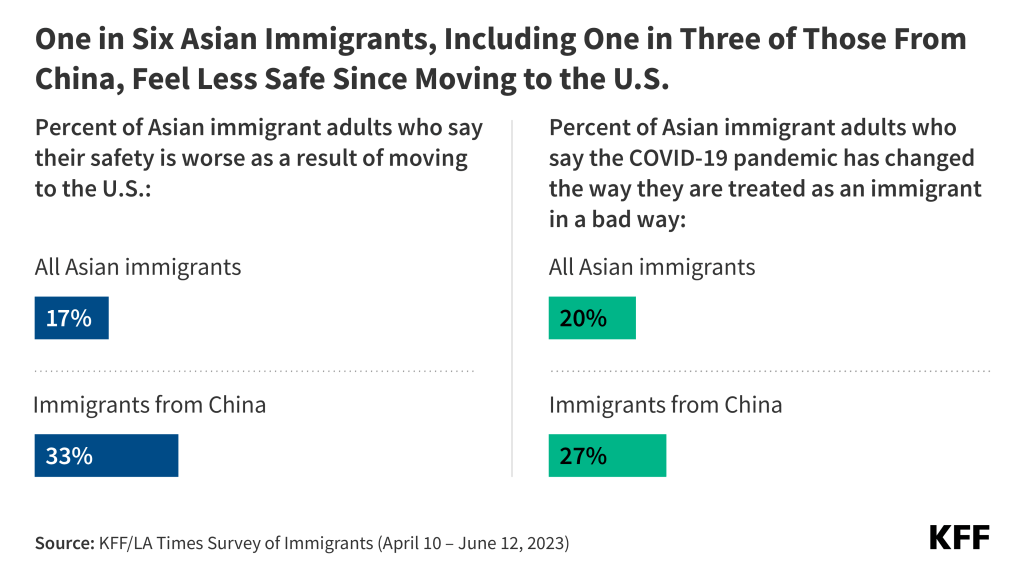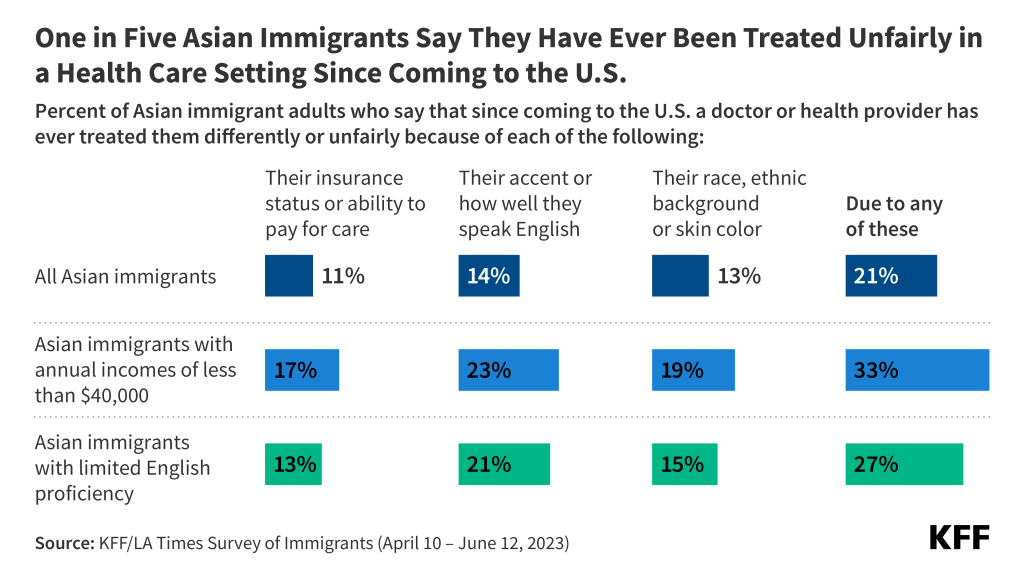
The independent source for health policy research, polling, and news.
3 Charts: Asian Immigrants’ Experiences in the United States
Like other immigrants to the U.S., Asian immigrants overwhelmingly say they emigrated for the opportunity to build a better life for themselves and their children. They come from more than 30 countries, and their experiences – their economic circumstance, how safe they feel, and the discrimination they face – vary greatly once here, including differences by income level, immigration status and country of origin.
These three charts explore the diversity of the Asian immigrant experience, drawing on findings from a new KFF report based on data from the KFF-Los Angeles Times Survey of immigrants:
1) Most Asian immigrants are faring relatively well financially, though there’s variation by region of origin, with immigrants from South Asia doing notably better than those from East or Southeast Asia. And one-in-three low-income Asian immigrants struggle to pay their bills.

2) One-in-six Asian immigrants, including one-in-three of those born in China, say they feel less safe due to their move to the United States. One-in-five Asian immigrants – and a higher share of those from China – also say that the COVID-19 pandemic has negatively impacted how they are treated in the United States, likely reflecting anti-Chinese rhetoric amidst the pandemic.

3) One-in-five Asian immigrants who sought health care in the U.S. say they have been treated unfairly by a health care provider at some point due to their accent or ability to speak English, their racial or ethnic background or skin color, or their ability to pay. The shares are higher among those with lower incomes or limited English proficiency.

For more about Asian immigrants’ experiences beyond these three charts, including their reasons for coming, their employment and financial situation, their experiences with discrimination and health care, and their understanding of immigration policies, read our new report, “Understanding the Diversity in the Asian Immigrant Experience in the U.S.: The 2023 KFF/LA Times Survey of Immigrants.”